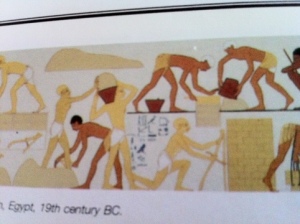I am going on holiday, so luckily for all of you there won’t be any new columns here next week. The horror resumes May 10.
I hear that mad cow disease is back for the first time since 2006. Ah, 2006. The year the iPhone was released, putting millions of other cell phones out of work. Cell phones that have long since run out of unemployment benefits and are now taking odd jobs such as cleaning gutters and producing reality television shows.
When I heard about mad cow disease in those days, I pictured cows sitting in their living rooms with scowls on their faces. A bull comes in from the kitchen with a beer and newspaper.
“What’s wrong honey,” he asks his wife, who is sitting on the couch and looking upset.
“Oh, nothing,” she says, looking away.
“Really? You’re not mad about anything?”
“No really. I’m not.”
“I don’t know, honey. Usually this means you’re mad about something. Is it because I wore that wrinkled shirt to your parents’ last night?”
“Hm.”
“I knew it. Look, I told you, I was in a rush. That old McDonald has been breathing down my neck about those reports, and I just didn’t have time. Okay?” He takes a sip of his beer. “Well…I’m going back in the kitchen.”
But no, apparently the “mad” of the mad cow disease, aka bovine spongiform encephalopathy, is characterized more by a cow’s inability to stand. In male humans, this symptom takes the form of an inability to mow the lawn or check that the garage door is locked, even though it was checked an hour ago and the male human is already in bed and half asleep.
A major concern with mad cow disease is controlling its spread. This is accomplished by not feeding cattle meat to other cattle. But a glitch in the system is that cattle meat may be fed to pigs, whose meat is in turn fed to other cattle. And then those cattle are fed to humans at steak restaurants, many of which give a choice of two sides, or sometimes two helpings of the same side, but never any substitutions.
Of course, the most important question surrounding mad cow disease, more than the beef industry or whether the safety record of triple-decker cheeseburgers will be besmirched, is the name. Wikipedia is entertaining input as to whether “Bovine spongiform encephalopathy” should be re-filed under “Mad-cow disease.” I support the change. As much as I like the way “spongiform encephalopathy” rolls off my tongue and bespatters the face of the person I’m talking to, I don’t think the scientific terminology would have captured the public’s attention the same way.
Because everyone knows what “mad” means. Everyone has been mad at one point or another. Maybe people are mad just reading this blog post. And I’m sure that they would have classified a “mad human disease” a long, long time ago, had it not been apparent that the infection rate would be close to 100%, and that there would be no cure.
